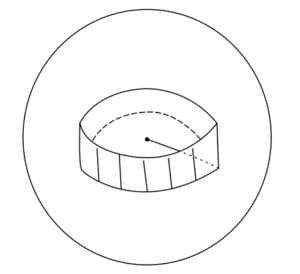Math Lab Activity
– What I Do in a Day
Objective:
This activity helps students understand the properties of a circle graph using a real-life application.
In this activity, you will create a circle graph to visually represent how you spend your time during an average day. By using colors and proportions, you will show the different activities you engage in and the amount of time you allocate to each.
Materials Required:
- Activity sheet with a circle graph template
- Colored pencils or markers
- Strips of paper
- Glue or tape
- Ruler and pencil
Instructions:
-
Thinking About Your Day: Begin by considering your daily routine. Think about the activities you typically engage in during a 24-hour period. These activities could include sleeping, eating, going to school, doing homework, spending time with family, playing, and more. Estimate the number of hours you spend on each activity.
-
Creating Your Key: Fill out the “Key” table on the top-right corner of your activity sheet. Write down each activity you identified, and the number of hours you spend on it, and choose a color to represent that activity on your graph. Make sure that the total hours in your Key add up to 24 hours, representing a complete day.
-
Coloring Your Strip: Take a strip of paper and color in the squares according to your Key. For instance, if you spend 8 hours sleeping (represented by red), color 8 squares on your strip with the red color. Similarly, color the squares on the strip for each activity you engage in, using the respective colors from your Key.
-
Assembling Your Loop: Once your strip is completely colored, form a loop by taping or gluing the shaded end to the back of the other end. This will create a colored loop representing your daily routine.
-
Placing Your Loop on the Circle Graph: Place your loop on the circle graph template provided on your activity sheet. The center of your loop should align with the center of the circle. The colors on your loop should be visible on the outside.
- Marking Your Circle Graph: Starting with one end of color on your loop, align it with the radius on the circle graph. Make a mark on the circle at the end of each color on your loop. Be sure to label each section with the corresponding activity and color from your Key.
Remember, the size of each colored section in your circle graph should be proportional to the number of hours you spend on each activity.

Finishing Your Circle Graph:
- Connecting the Marks: After you have marked each section on the circle graph with the pencil, carefully remove the loop from the graph. Now, take a ruler and a pencil. With the center of the circle as your reference point, draw straight lines from the center to each mark you made for the sections.
- Coloring Each Section: With the lines drawn, each section of the circle graph is now defined. Take your colored pencils or markers and color in each section according to the colors you chose in your Key. Color the sections completely to match the colors on your loop and Key.
- Adding Final Touches: Once you’ve finished coloring each section, take a moment to review your completed circle graph. Check to make sure that the colors and proportions accurately represent the time you spend on different activities throughout the day.
Congratulations! You’ve successfully created a circle graph that visually displays how you spend your time in an average day. This graph will help you visually understand your daily routine and how you allocate your time to various activities.
Ignite Your Mathematical Mind:
- How could we utilize the information from our 24-hour day breakdown to create different types of graphs, like bar graphs or line graphs?
- What advantages might these alternative graph formats offer in terms of visualizing and comprehending our daily routines?